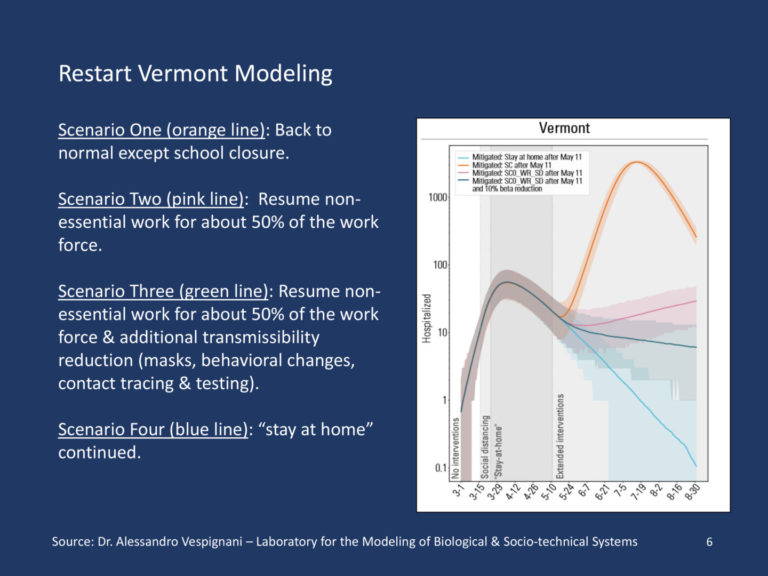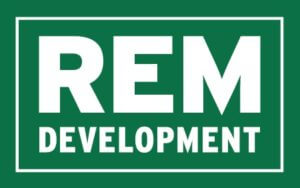This week’s Legislative Update is sponsored by:
May 8, 2020
This week saw the proverbial spigot on the economy turn open more than previous weeks, with more Vermonters going back to work and more flexibility for Vermonters to get outside or see loved ones. While there will always be debate around the pace of such actions, a recent survey from Harvard’s Shorenstein Center found that 88% of Vermonters feel the state government is “reacting about right” in response to the epidemic, the highest rate in the country.
As with all phases of businesses reopening, the ability of a sector to facilitate re-opening in a way that protects public health will likely inform future restrictions and if the state needs to return to more restrictive measures in the event of an increase in COVID-19 cases.
In this week’s update:
- Governor opens multiple sectors of the economy
- Make sure you’re following new requirements to operate your business
- LCRCC requests relief efforts for tourism and hospitality businesses
- Provide information and input needed to assist in recovery efforts
- Interim path forward on budget pressures found; major cuts and tax increases loom
- The Laundry List
Governor Scott Continues Turning the Spigot on the Economy
- Healthcare – On Monday, the Governor took the large step of allowing limited elective procedures to resume, which had previously been put on hold as Vermont’s health care system focused on the current public health needs. His amendment to Addendum 3 to his executive order, allows limited elective health care procedures to resume. Outpatient clinic visits and diagnostic imaging can resume immediately if providers demonstrate they are adhering to physical distancing and relevant CDC guidelines. Providers may also begin to perform outpatient surgeries and procedures that have a minimal impact on inpatient hospital bed capacity.
- Outdoor Recreation – Addendum 13 also authorized businesses, non-profit, and government entities that support or offer outdoor recreation and outdoor fitness activities with low or no direct physical contact to begin operations on May 7. These operations are also subject to all health and safety precautions set in Addendum 12. See section 4.1 of this page for complete guidance
- Easing of restrictions on gatherings of 10 or fewer and inter-household socializing – Vermonters may now leave home for outdoor recreation and fitness activities with low or no direct physical contact and to resume limited social interactions and gatherings of 10 or fewer, preferably in outdoor settings that allow for greater physical distancing protocols. Members of one household may gather – and allow children to play – with members of another trusted household, provided health and safety precautions are followed as much as possible. Read more here.
- Childcare – All Childcare programs are allowed to reopen by June 1st if they would like to and can meet health and safety requirements. Starting May 18th childcare centers can bring back staff to begin making changes necessary and training staff to accommodate new health and safety measures. Childcare workers will be included in the new expanded testing and tracing programs. $6 million in Restart Grants will be available to help these programs transition.
- Summer Camps – Summer camps will be allowed to operate this summer. Guidance will be developed and shared shortly for overnight camps and grants will be available to help cover the added costs of making programs safer. The administration acknowledges that these camps will look significantly different this summer and some camps will not have a path forward to operating this summer.

Required VOSHA Training, Designated Safety Officers, and Planning
As part of Addendum 12, it was announced that as businesses work toward reopening, each employer will need to develop a reopening and training plan to ensure the health and well-being of Vermonters as they return to work. You can find help navigating these requirements on LCRCC’s Getting Back to Work Guide which has some additional guidance we are updating regularly as well as links to the Restart Vermont Resources.
LCRCC will be hosting a Webinar on Tuesday, May 12 from 10:00 am – 11:00 with DRM’s labor and employment team to discuss how to plan a successful return to work strategy. DRM’s team will help you think through the process and present strategies to consider for your organization. The webinar is full, however, you may still register here to receive a recap and be placed on a waiting list.
LCRCC Requests Relief for Tourism and Hospitality Businesses
LCRCC sent similar memos to the Administration and the Legislative Joint Fiscal Committee this week requesting funding and regulatory changes to assist our restaurants, bars, hotels, inns, and other businesses that contribute so much to our state. These businesses were the first to feel the economic impact of our state of emergency and could be the last to recover. LCRCC proposed the following:
- A grant program under which businesses could apply for grants equal to the sum of their rooms and meals tax remittance for their highest six month period of 2019. Using the rooms and meals tax as a metric would provide the most efficient, streamlined, and equitable mechanism to right-size aid to each business.
- $1 million be appropriated to market Vermont as a preferred destination for travel and tourism to ensure this sector has the customers it needs once it is safe to resume business.
- Easing restrictions on restaurants to allow outdoor dining with proper accommodations for social distancing and other best practices starting May 22.
- $50,000 in grants to provide technical assistance and cover building materials to facilitate outdoor dining or retail in reasonable and safe ways.
- Guidance to municipalities on easing codes or municipal zoning for public right of way and public spaces to accommodate outside, socially distanced dining or retail until such measures are no longer necessary.
Providing Information and Input Needed
Vermont’s Local Support and Community Action Team of the Economic Mitigation and Recovery Task Force needs your help prioritizing high-impact actions for local, regional, and statewide recovery. Please share your priorities in this quick survey on or before Tuesday, May 12 via this survey here.
ACCD is also still collecting responses from Vermont businesses impacted by the response to the COVID-19 virus. Please share these impacts via the ACCD Business Impact Form, which will help us assess the full impact as we work toward solutions.
LCRCC is hoping to better understand the size of the gap between various federal and state relief tools so we can best help the business community. Please complete this survey so you get the most relevant assistance and resources.
Interim Budget Plan Developed, Future Open for Debate
This week the Governor proposed using $138 million from the state’s reserve funds to bridge most of the $194.50 million deficit we face in this fiscal year with the intention of paying the money back early next fiscal year. This is feasible because we are facing a two-part problem; first, we have a revenues shortfall which we need to adjust for due to decreased economic activity associated with COVID-19 which is anticipated to be up to $48 million; second, we have the cash-flow issues associated with the delay of the filing deadline for many taxes which are anticipated to be $138 million that would typically but won’t come before this fiscal year ends in only 2-months due to tax deadlines being pushed out. The leaders of the House and Senate indicated support for this plan yesterday on Vermont Edition. This plan of action will postpone any deep budget cuts or high tax increases until the FY 21 budget which, as we reported last week, will be dealt with in pieces, starting with a budget for the first three months of the fiscal year being passed in June followed by a second budget in August.
The big gamble here is that if not all of the $148 million comes in next year we won’t be able to pay back the reserve funds in a fiscal year that already has an anticipated $435 million revenue shortfall. This year’s revenue shortfall can be patched together with $56.07 in various funds including $4.6 million from additional unanticipated alcohol sales last month and a $37.7 million Medicaid cost savings from a reduction in usage as people avoided hospitals and a bump in the percentage for federal Medicaid assistance.
The FY20 Supplemental BAA Worksheet and language in the supplemental BAA
The continued discussion over the $1.25 billion in Coronavirus Relief Funds made available to the state by the CARES Act might be close to what a thirsty person adrift in an ocean might feel; there’s water everywhere, but very little to drink. This week the Administration released a document outlining their understanding of the guidance provided by the U.S. Treasury and legislators continued the task of trying to understand the funding. At one point a committee chair asked a member of the Joint Fiscal Office if the state might possibly find itself in a position to not use all the money given the strings attached, to which they said that is possible.
The House Ways and Means Committee this week discussed using a cloud, candy, sugar-sweetened beverages, luxury clothing items, tobacco, beer, and alcohol taxes as well as a COVID-19 “surcharge” on the sales tax of 1% to address the estimated revenue gap in the education fund of about $167 million in the education fund.
The Laundry List
- Agency of Natural Resources Secretary Julie Moore proposed in House Appropriations this week deferring the development of a 3-acre stormwater permit finance program to support landowners who are required to build a stormwater management project as a result of the 3-acre permit. Moore said the Agency is investigating whether all 3-acre permit coverage can occur by 2023 or whether that compliance deadline will be pushed out.
- The House Ways and Means Committee finalized a plan the Appropriations Committee will take up which creates a municipal borrowing program to help states remit property taxes due at the start of June as municipalities owe the state their assessment whether they collect it or not. The plan developed by State Treasurer Beth Pearce encourages municipalities to borrow the difference of what they can collect and their assessment from local lenders with the state paying the interest utilizing dollars from the CARES Act. Municipal Education Property Tax Borrowing Proposal
- The Department of Public Service is seeking comments on a $300 million draft emergency broadband access plan that would achieve universal service and bring broadband-capable networks to students, remote workers, teachers, patients, and healthcare workers. Universal broadband has long been a goal in this state, however, the legislature has never been able to find a reasonable solution to cover the cost. See the proposal here.
- Read last week’s update here.
Concerned or need to learn more about anything in this newsletter? Email our team at [email protected].
We look forward to working with you this session.
Sincerely,
The Lake Champlain Chamber Advocacy Team



